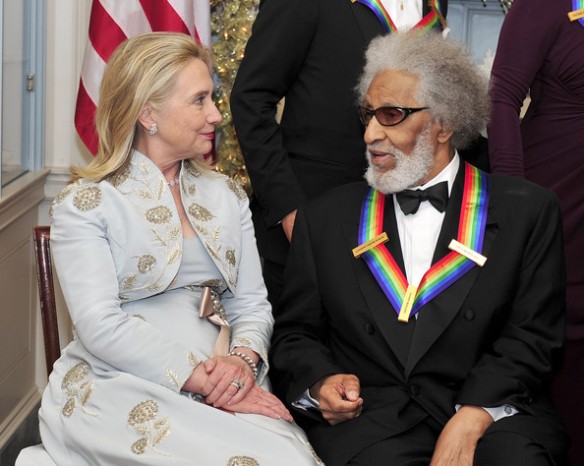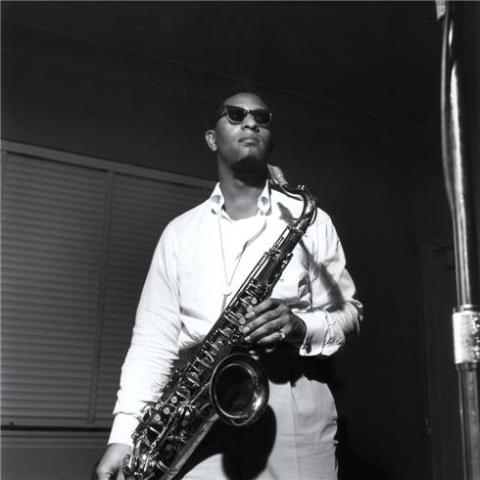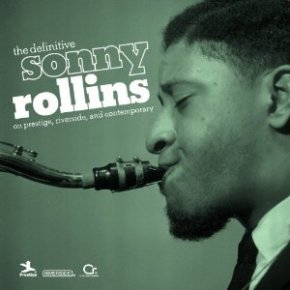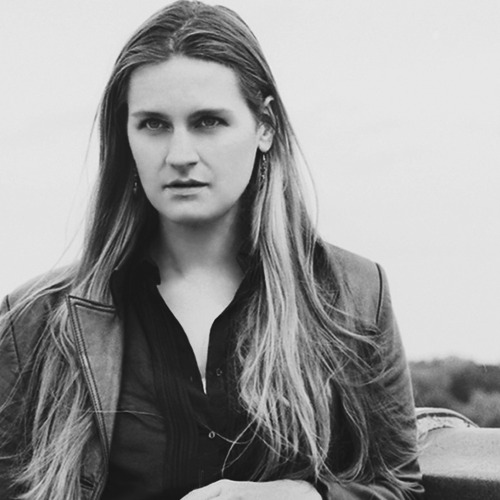Raising the Bar: Occupy Orlando sets the regional standard.
This reporter, who lives in Jacksonville, recently spent a couple of days visiting Occupy Orlando, which was then in its third week. The Occupy movement began in New York City, then quickly went national as graphic evidence of police misconduct inspired others to start their own local offshoots in solidarity. As such, while each Occupy location does have certain features common to all, they mostly reflect the distinctive character of the cities and towns they are situated in.
Having already spent hundreds of hours researching the subject in general, including communications with insiders, observers and other journalists at Occupations around this country, the chance to sprint south and check out the scene in Orange County was welcomed eagerly. It certainly helps that Orlando is a beautiful city with great food, from eateries like Dandelion Community Cafe and Ethos Vegan Café, multi-media madness at Rock and Roll Heaven and Park Avenue CDs, which is the best record store in all of Florida. Right around the corner, Stardust Video and Coffee makes epic soups and sandwiches and a massive selection of DVDs for rental. Each Monday evening, their parking lot hosts the Audubon Park Community Market, while the Homegrown Local Food Cooperative (HomegrownCoop.org) provides sustainable fruits, vegetables and dairy to homes and restaurants throughout Central Florida.
The city’s impressive development in the half-century since Disney’s arrival makes it an ideal location in which to weigh the costs and benefits of the corporatized society the Occupiers stand opposed to. The fact that so many of them (the students, in particular) are beneficiaries of this system does not invalidate their position; rather, it reinforces their responsibility to get involved.
After putting the word out via social media (the author maintains the greatest Facebook page ever, full disclosure), about two hours elapsed before receiving a phone call from Brook Hines, part of their Media Relations team. At 45, her experience in the media and public relations world was put to good use. This type of rapid response and vigor in regard to outreach efforts has been crucial to their rapid success in a state that is generally almost devoid of large-scale progressive activism of any kind. As she puts it, “We want to work with the city, rather than crash it.”
There were veterans of the Iraq, Afghanistan and Vietnam wars. Some got their first taste of politics via the Obama 2000 campaign. Others are veterans of older movements, including the assorted presidential campaigns of Ralph Nader, Ross Perot and Dennis Kucinich. A smaller segment comprised folks old enough to have participated in the seminal protest movements of the 1960s; for many old-school activists, these may be the final act in their political lives.
As Hines wrote in one of the group’s press releases: “Like Occupy Wall Street, Occupy Orlando is a leaderless movement, but it is far from disorganized. Coordination takes place online and at daily General Assemblies where … participants present ideas and dialogue until reaching consensus. Then, we take action to accomplish out collectively approved goals. The formation of multiple committees, including media, medical, peacekeeping, legal, transportation, food, event facilitation and materials preparation, enables all participants to contribute to the movement.”
The actual Occupation of Orlando commenced on Saturday, October 15, but planning began two weeks earlier, including two General Assemblies held at the Orange County Regional History Center. The date was announced in advance, a website was set up, Facebook pages and Twitter feeds built, supplies gathered, responsibilities designated and promotional materials (flyers, buttons, posters, etc.) prepared. They even sent out a letter soliciting the support of local businesses. The work paid off. The first event was arguably the biggest political protest ever held in Orlando, drawing between several hundred and a couple thousand participants, depending on who you ask.
Beth Johnson Park is just a quarter-mile or so down the street from Boom Art Gallery, a shop showcasing the brilliant hand-crafted work of Glenn and Sandy Rogers, which they describe as “the fusion of functional furniture and nostalgic art”. Their client list is awesome, and includes Ann-Margaret, Jay Leno, Paul Shaffer, Jeff Foxworthy, Mandy Moore, Robert Plant, Carrot Top and Shaquille O’Neal.
The art is must-see, and the artists are two of the most interesting people I’ve ever met. Glenn’s dual backgrounds in fine art and as an International Flooring and Home Furnishings Designer led to a diverse career that included technical work on Broadway, shows, art exhibits in SOHO, storyboarding the “Mr. Whipple” commercials for Charmin, acting credits in Hollywood and the New York stage; he also helped create the Yellow brick Road used in The Wiz. The Rogers met and married during their 15 years spent touring together as clowns in the Ringling Bros. and Barnum & Bailey Circus. Sandy was, for seven years, Director of it Clown College, in which capacity she helped train Steve-O. Unsurprisingly, they offered full support for Occupy Orlando.
“This is redress of grievances, not a wedge-issue protest,” said Matthew, a 23 year-old student and musician part of a group of young people sitting on blankets in the park one day. His group included several people who’d been part of the OWS group, but were reticent about sharing further details with a journalist.
Over 2,000 people had taken part in the occupation, over 200 of whom spoke at the General Assemblies; and another 10,000 people had expressed support online in just the first five days, and those numbers spiked in subsequent weeks as Occupy caught steam nationally and Occupy Orlando started getting mainstream attention.
Like many of their fellow Occupy operations, the Orlando group maintained a camera streaming content directly to UStream.tv. Depending on the size of the crowd and the amount of activity in a given city at any given time, most full-time occupations run live video 24/7, while others fill the “dead” time with video of earlier activity; some cities have more than one feed, in addition to whatever is being done by individuals. This type of instant connectivity isn’t just great for outsiders (advocates and critics alike) to watch what’s going on directly and interpret for themselves. It is crucial for the actual occupiers in each of those cities, who can now learn from each other in real-time, share knowledge, adjust their methods, streamline tactics and goals, as well as networking.
Maybe no other city in Florida has brought in as much money from multinational corporations than Orlando, but there are many ways to quantify it. But its public image is tied-in with Disney and Universal Studios in a way no other city is with the many large companies doing business in them. Theme-park money spurred tremendous growth, and the landscape reflects it, especially compared to the relative bleakness and desolation of the outlying areas like Winter Park, Casselberry, Maitland and Ocoee. (The blank-yet-knowing looks on the faces of the kids working at the Walgreens and Steak and Shake in Apopka made me want to adopt them all, or at least write them recommendation letters to the UNF.) Mass-transit out there sucks, putting the lower-income families living out there at a persistent competitive disadvantage for jobs and schooling, the youth in particular.
The reader has probably seen the video(s) from Zucotti Park, where those three wee lasses felt the hot stuff (which really hurts, by the way). Note that at least one officer was already conducting a discussion with the ladies related to their refusal to get up and leave. While not exactly cordial, it was civil until his colleague imposed his own will upon the proceedings. The original cop’s agitated response, directed toward the one who deployed the burning, stinging mist into a group of civilians and fellow NYPD officers, presaged later confirmation of prior complains against the same guy at political events.
The nefarious action of one cop means little compared to the historic reputation of a department that saves and improves the lives of people every day, nor does it mean that the women sprayed that day were necessarily right. But the incident was recorded from a number of angles, and the targets were highly intelligent, well-connected members of a well-organized protest operation that was already ongoing in New York, with affiliated groups already starting elsewhere. The hardest part of civil disobedience is to not fight back when violence is used; that’s why most people generally want no part of it.
NYPD handed Occupy an image to, for lack of a better word, brand their movement, and like all good brands, it has staying power: young people being pushed around for engaging in political protest. Thanks to cell-phone cameras, YouTube and streaming video sites, a huge portion of the thousands of Occupy-related arrests have been documented, replete with scores of clear-cut incidents of abuse. The situation in Oakland alone could fill a book; surely a number of student protesters will apply their field experience directly to the classroom.
It only took a few good squirts of poorly-aimed pepper-spray to transform Occupy Wall Street into a national movement, and Florida is doing its part
Beth Johnson Park sits at 57 S. Ivanhoe Blvd. It curves off the I-4. Whether approaching from any angle, the first thing one will see is the American Flag. Currently, Beth Johnson Park closes at 11pm. All citizens must vacate by then, but the sidewalk is not subject to those rules. As such, Occupy Orlando adopted what’s called “Sidewalk Solidarity” by standing on the sidewalk in shifts, 24/7. However, the law does prohibit sleeping on the sidewalk, sitting down on it, or sitting in a chair (all activities that are allowed in the actual park when it’s open). Sleepyheads make use of a privately-owned parking lot across the street, 20 feet away. Although trespassing charges was raised by police, they did not occur because the lot’s owner either refused to make a complain, or was otherwise not present.
This is just among the many examples of how, despite the anti-capitalist talking points and the alarmist rhetoric of commercial media, sizeable portions of the business community around the country are exerting subtle forms of support for Occupy activities. Another is that the nearby Doubletree Hotel offers its bathroom facilities for the occupiers. (Note also that Zucotti Park, the epicenter of Occupy Wall Street, is itself owned by a billion-dollar corporation that clearly has no issue with their presence, as long as they clean up after themselves.)
Most occupiers have chosen to heed those rules, but as expected others forced the point. Occupy Orlando took a huge, risky step forward on the night of October 22, when a small group of activists chose to openly defy city rules and remain in the park after 11. They, as individuals, chose to stage their own independent action without the approval of the General Assembly; some 200 people were doing Sidewalk Solidarity at the time. Some allege it was a blatant publicity stunt, others that it was an attempt to be more aggressive in the face of political power.
This civil disobedience resulted in Trespassing arrests for 19 people, including two women and a juvenile. By all accounts, the police were entirely professional in doing their job. (It’s always worth noting that law-enforcement has very little actual influence on the crafting and implementation of our nation’s laws, and citizens are worse off for it.) If it was a publicity stunt, it worked perfectly by forcing the occupation into commercial media, thus helping to grow the numbers. Another 13 arrests were made a few days later, as activists refused to vacate the park following the teach-ins on November 5—Guy Fawkes Day, incidentally, and also a day after the epochal success of Bank Transfer Day.
Among those 19 arrested that night was a wheelchair-bound young man who had been doing unpaid volunteer work for President Obama’s national reelection campaign, similar to his activities in 2008. His disability leaves him unable to do most types of work, so he lives at home with his family, on a fixed income, while he pursues his studies. Like many people in his position, he’s felt the heat of price increases and the pressures exerted on many Americans as state legislatures around the country clip strategic holes in the social safety net; those concerns manifest as political action.
His involvement with Occupy Orlando was as a private citizen, not as any type of representative for an Obama campaign that many critics allege the Occupy movement is designed to help, much as the Tea Party ultimately served Republican interests. However, after the news of his arrest became public, he was dismissed from his official duties and rendered persona non grata, on the pretense that his arrest brought negative publicity to a campaign that hasn’t even been officially declared yet.
Further, the fellowship that made the delicate balancing act of his student life possible was immediately pulled, throwing his educational future into some doubt. The crushing news was delivered by telephone, by a supervisor who was either unwilling or unable to say exactly who made the decision, or to delineate the process by which his life was ruined. He was still emotionally wrecked, visibly and palpably so, as I spoke to him ten days later; the police who arrested him were downright kind, compared to the allies who shafted him, over a petty charge that will most be dropped.
Yet, despite this life-altering humiliation, the young man was insistent that his name not be used here, because that’s how strongly he feels about reelecting Obama. That, in a nutshell, in what the Occupy movement is about: Young (and not-so-young people doing what they think is right, despite the extreme consequences that may result. His plan now is to hit the road, visiting and collaborating with other Occupy operations in places like New York, DC and Chicago, culminating with the ongoing actions in the city of his birth, Philadelphia.
Many activists on the scene gave vocal credit to students from the University of Central Florida. Many of those UCF “Knights” have lived up to the moniker, in terms of their contributions to the effort, from logistics to publicity.
October 25 saw 15 Occupy Orlando activists expanding outreach efforts even further by sitting in to show support for the Amalgamated Transit Union Local 1596, which was negotiating with the Board of Directors for LYNX, Orlando’s bus system. According to a press release, “Drivers have not seen wage increase in three years and are being offered only a 0.5 percent wage increase at a time when inflation for food is forecast to rise as much as 4.5 percent.” They had no obvious effect on negotiations, which remain calcified, but it made for valuable experience.
Such action has become a worthwhile habit. The day before, Occupy Orlando sent 27 people in business clothes to the Orange County Legislative Delegation meeting, where they had meetings with state representatives from both parties. Occupy has also become a regular presence at meetings of the Orange County School Board and the Orlando City Council.
November 1 was Day 18 of the occupation, and coincided with the “Awake the State” rally. The day’s most popular whipping boy was the local Chamber of Commerce. It operates out of a large multi-story building adjacent to the park, yet reportedly pays only $1 in property taxes per year. Spicing the brew, Mayor Buddy Dyer had apparently, a couple days prior, made the astoundingly absurd claim that there was no corporate money at all in Orlando.
A low makeshift stage was laid out near the entrance to the park, placing the Chamber building (and the sunset) behind the speakers. Their modest PA was sufficient. Speakers included an older activist whose rights to vote had been forfeited via felony; he copped to his mistakes, and urged everyone else to cast the votes he could not. The owner of Dandelion talked about the wildly disproportionate environmental impact fees that undermined profitability and her ability to hire new workers. A member of the teachers’ union noted that Florida teachers haven’t received a cost-of-living wage increase in three years; “Education cuts don’t heal”, she said. The delightful Sundrop Carter brought glad tidings from the United Auto Workers, who are stepping up organizing efforts in Florida, a state basically built around the automobile.
Although no elected officials made their presence felt on Day 18, the crowd did include a number of veteran political insiders, as well as a couple of candidates. Mike Cantone, 28, is seeking to unseat mayor Buddy Dyer in next year’s elections (scheduled for April 4, 2012). He comes off as a smart, earnest young man who’s quickly developing a certain facility with the lingo of leadership. Having myself run for Jacksonville City Council in Jacksonville earlier this year, I was curious about how his new-reality based, grass-roots approach would fare against an entrenched incumbent like Dyer.
He began smartly, with a streamlined and systematic approach to his platform. He broke it down into seven key components; for each he created quick, one-line synopses of his vision, then identified a number of forward-thinking proposals he would implement in order to methodically each component of the larger agenda. Listed alphabetically, they are: Clean Energy (4), Coordination (3), Education (4), Innovation (10), Public Safety (7), Quality of Life (6). As a Jacksonville resident, I appreciate the catchphrase “A Bold new Vision for Orlando” even more than his slogan, “I Like Mike!”
As one might expect, he’s fully-synchronous with social media, and his promo materials are well-done; they’re also union-made. The aesthetic centers on soothing blues and greens, reminiscent of the city’s waters and lush plant-life. The candidate’s picture is good, with a nice sunset background, but it can be improved upon.
We both agreed that the non-partisan, “unitary”-style elections held at local levels offer the best chance to get new progressive talent into office, as opposed to the standard process, which allows Democratic gatekeepers to freeze out any dissenting voices. As we have both noted repeatedly, the great efforts made by Occupy so far will be wasted unless they translate to serious political gains in that epochal year of 2012.
Occupy Orlando has a lot of electoral activity they can exert potential influence on. Senator Bill Nelson is up for reelection, and the popular Democrat will have several marginal Republicans chasing his rear bumper; a strong progressive turnout helps bolster what looks so far to be an fairly easy win, and be crucial if conditions change. All seats in the US House are up for grabs next year, and those are always volatile; Occupy’s exact place amidst is impossible to guess..
Locally, besides Dyer’s seat, four of the seven School Board seats in Orange County are up for grabs, as well as three of six seats on the Board of County Commissioners and three of five seats on the Soil and Water Board. The offices of Sheriff, State Attorney, Public Defender, Clerk of Courts, Comptroller, Property Appraiser, Tax Collector and Supervisor of Elections are all on the ballot in 2012, so the stakes are huge. This election will decide the future of their city.
In real terms, a guy or gal like Cantone would need a massive groundswell of progressive activity statewide, the rising tide to lift all boats. He (or any other, similarly-inclined candidates elsewhere next year) can probably build a formidable street team, but to keep them all activated at full efficiency, it takes money. 2012 will be the most expensive election cycle in history; to win in that environment does not necessarily require more money, but it does require a substantial amount of ready cash. My campaign, for example, did not result in victory because I was not an effective fundraiser, and could not find anyone who was. Cantone and his ilk must be a lot better, a lot faster, and it’s quite possible.
I also met a fella named Curtis Southerland, also from Jacksonville. His path into the realm of political activism was neither planned nor voluntary. His obscure, outsider campaign to unseat Jacksonville Sheriff John Rutherford as a write-in candidate in 2011 was motivated by his desire for redress after his brother Mark[?] was killed in a one of those “police-involved shootings” that have now become an unfortunate trademark of the Jacksonville Sheriffs Office. He lost, of course, but that’s fine because the fix was in from the start; former JSO Public Information Officer Ken Jefferson had an excellent chance to win, but regional Democrats stymied his fundraising, for unknown reasons. Southerland’s campaign was more of a protest against the system and a means of telling people about the tragic death of his brother.
Local media coverage was generally fair, though laced with the same snarky cynicism typical of Occupy reporting in general. Leading the pack, surprising, was the nominally liberal Orlando Weekly, which functions in the case as a gatekeeper for an Establishment Left that has been uncomfortable with Occupy from the get-go. In its October 27 issue, staff writers Billy Manes and Jeff Gore flog the standard commercial media talking points: That Occupy has no “list of demands, a chief goal or an overarching political philosophy”. While conceding their sidewalk strategy to be “brilliant”, they repeatedly note the “(ostensibly) leaderless nature of their organization” and keep the focus squarely on the negative aspects, like arrests and shady characters.
Granted, this was published only 12 days into the Occupation, and surely there is more left for them to say on the subject. But as a visitor to the city, I was disappointed to see its leading liberal publication projecting a generally dismissive attitude toward young people whose political views are basically consistent with the values of alt-media in general. It’s the sort of reductionist thinking that has essentially tanked political-based print media in general, in particular an alt-weekly market that has become aggressively corporatized and unresponsive to the needs of their audience.
Ironically, that issue’s cover features a snarling, broken-toothed Tea Party caricature as part of a series of poorly-done humorous Halloween masks. Occupy gets a nod, too, with a cut-out version of the now-ubiquitous Guy Fawkes mask adopted from “V” For Vendetta, which is now a universally-recognized symbol of Occupy and the larger (and more amorphous) Anonymous movement. “Initially dismissed as iPad-wielding hippies, the occupiers leered and groaned in the face of authority, anxiously anticipating police brutality and pepper spray,” writes Manes.
“The very notion that this leaderless movement had come to life as a pseudo-political monster is enough to cause apoplexy and anxiety among those in power [including, apparently, OW itself]. ‘Give us your list of demands!’ they screamed at the occupiers in a panic, only to realize that there really wasn’t a list of demands.” Imagine, two completely contradictory ideas coming from the same writer, in the same publication, just nine pages apart. This kind of cognitive dissonance certainly helps explain why the mainstream media still struggles to comprehend the depth and complexity of Occupy.
http://www.occupyorlando.org
http://www.occupythehood.org;
othorlando@gmail.com
http://www.mikecantone.com
http://www.ocelections.com
http://www.HomegrownCoop.org
http://www.stores.ebay.com/boomart
sheltonhull@gmail.com; November 7, 2011

 sheltonhull@gmail.com
sheltonhull@gmail.com












































